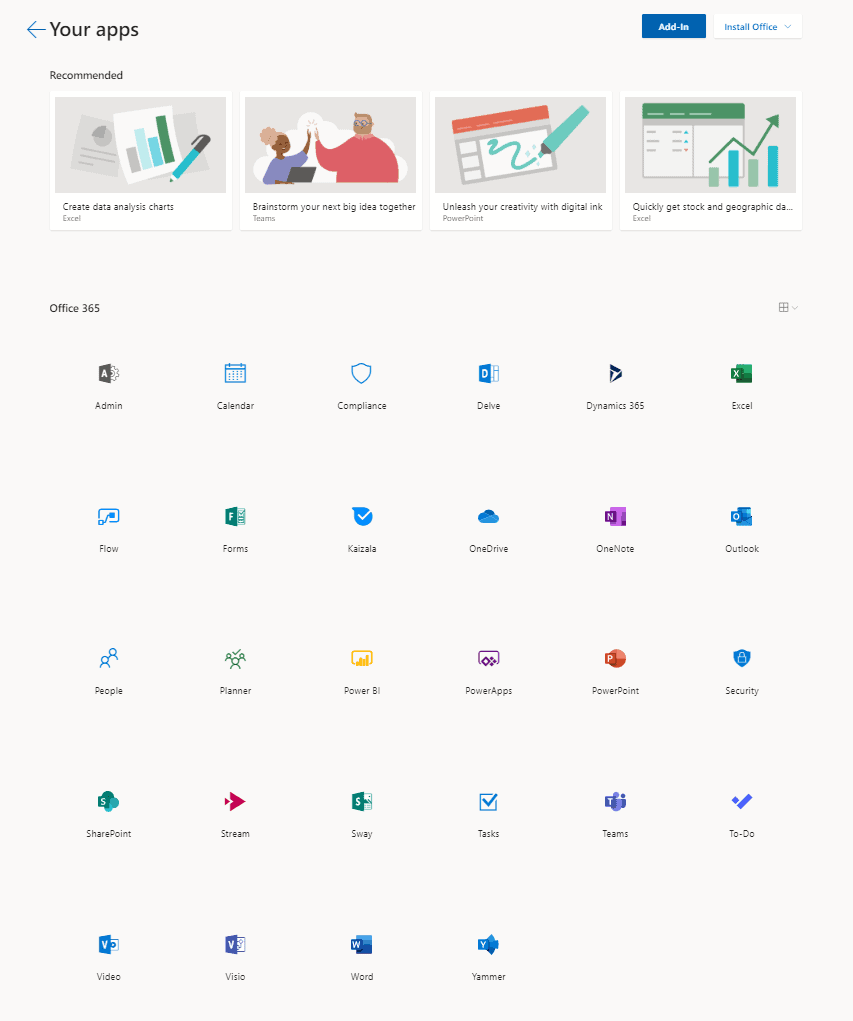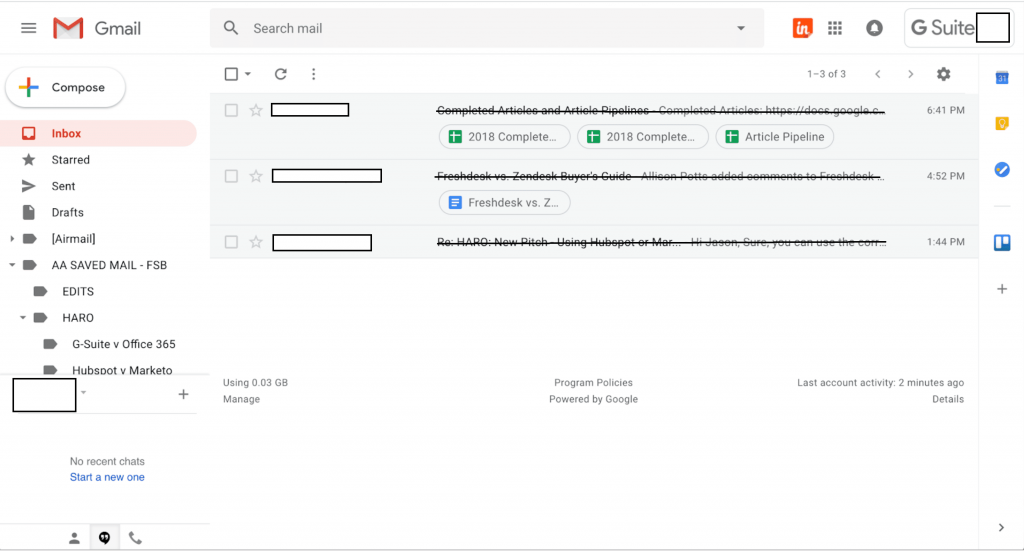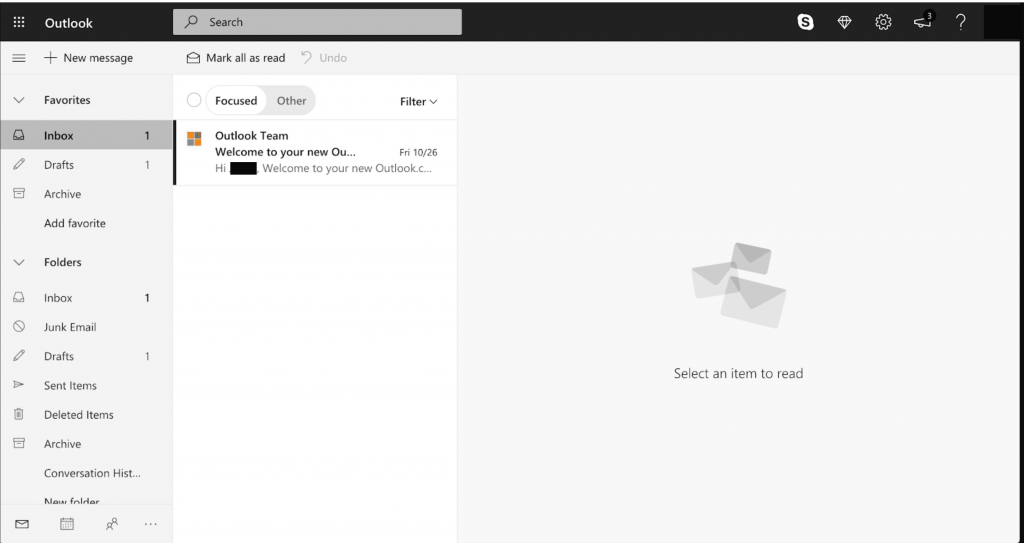As of April 21, 2020, the official branding of Microsoft’s productivity suite has changed from Office 365 to just Microsoft 365. The new naming convention reflects Microsoft’s strategy of providing a single complete productivity platform for its customers.
Fortunately the change from Office 365 to Microsoft 365 is not going to have much of an immediate practical impact. In general, the subscription you had on April 20 is the same as the subscription you had on April 21, only with a different name.
A question that a lot of business, especially start-ups and early stage businesses ask us is which productivity suite should we use, Office 365 or G Suite?
In this post we’ll do our best to help you decide which is best for your business. We’ll put the two head-to-head, comparing features, ease-of-use and the all-important pricing.
Both offer similar functionality – such as word processing, spreadsheets and file storage – but differ in many respects. In previous posts we’ve looked at how the Office 365 subscription-based offering differs from Office 2019.
What do Office 365 & G-Suite offer?
The Basics
G Suite is Google’s productivity suite, comprising of a range of applications. The most widely used of these are the ‘Slides’ presentation app, ‘Sheets’ spreadsheet editor, ‘Docs’ word processor and file storage platform ‘Drive’. It also offers excellent integration of numerous third-party apps which can be downloaded from the Google Web Store. In terms of deployment options, G Suite can be accessed via the internet and shortcuts can be made for the desktop. There is no downloadable software.
Microsoft Office 365 also comes equipped with a range of well-known tools. This includes the popular Word, Excel and PowerPoint apps, as well as email client Outlook and cloud storage platform OneDrive, along with other features such as Skype and Microsoft Teams, its instant messaging and collaboration tools. Microsoft’s Office suite has historically been downloaded to the desktop and accessed offline via Microsoft’s software on your PC or laptop. However, in an attempt to take on Google’s cloud suite, Microsoft Office 365 packages contain both on and offline versions, so users can choose and switch between the desktop and an online version of Office.
What Else is Included?
Office 365 comes with a myriad of additional apps included. These include PowerApps & Flow, which can be used to develop web and mobile apps without writing code; and To-Do, an app that lets you create simple to do lists, set reminders and keep track of projects.

There is little that a small business can’t do with Office 365, from collecting customer feedback, measuring employee satisfaction and organising team events with ‘Forms’ to taking client bookings directly from a fully customisable public facing web page with Bookings.
One of the drawbacks with Office 365 can be not realising just much it does offer!
G Suite includes ‘Forms’ which, funnily enough, is very similar to ‘Forms’ in O365. There is also a PowerApps equivalent called ‘App Maker’, and ‘Tasks’ which does a similar job to ‘To Do’. There is not quite the range of additional apps provided as standard but G Suite does provide access to a huge selection of third-party apps via the G Suite Marketplace. If you need something to develop charts and diagrams, in O365 you have Visio, in G Suite it’s Lucid Chart. Flow can be replaced by Form Workflow Plus, in short everything you can get in O365 is either available in G Suite or it can be added.

The G Suite Marketplace makes G Suite very customisable, however Office 365 offers AppSource – a similar marketplace for additional apps.
There is really nothing to choose between the two options when it comes to content. Both have a comprehensive basic offering, with a myriad of additional options. In both cases some additional apps are free, some are paid. However you can really tailor both Office 365 or G Suite to your needs.
Email is a key component of both products. So which is the better email offering Office 365 or G Suite?
Both options provide users with powerful calendars that are linked to their accounts and to others in the workplace. These calendars can also schedule meetings, and even book meeting rooms, once this function is properly set up. Users of either can now view calendars directly within their inbox too.
Gmail
G Suite gives you 30GB of storage and allows you to easily set up your email on your business’ web domain while taking advantage of all of the functionality of Gmail—the most widely used email service in the world. Your email storage is shared with your overall Google Drive storage limit. Gmail allows attachments up to 25MB, although you can share files larger than that directly from Google Drive. You can send to up to 500 recipients outside of your organisation at one time, and up to 2,000 emails per day.

Gmail offers a simple, functional interface which is easy to use and quick with good search functionality. Google also harnesses AI with its ‘Smart Compose.’ feature. This feature suggests autocomplete options for commonly used phrases, or personal information such as addresses, based on the user’s previous behaviour.
Outlook
Office 365 email, also known as Outlook, has a 50GB storage limit on each of their business plans. This limit is separate from your overall cloud storage, which means your email attachments aren’t taking up space in OneDrive. On the other hand, if email storage space is important, unlike G Suite, you aren’t able to use your full cloud storage for email. Outlook supports sending mail to up to 500 recipients at a time, and a maximum file size of 150MB.

The Microsoft desktop client is much more feature rich than the Gmail offering. For example, Outlook users can create countless ‘rules’, which can perfectly tailor how your incoming and outgoing emails are managed. Closer to the Gmail client is the Outlook web email client. This stripped back version is easy to use with quick, responsive search and sorting capabilities and gives Gmail a real run for it’s money.

Functionality v storage is the key decision here. Some will prefer the added features provided by the Microsoft offering, others will need the extra storage flexibility provided by Gmail.
Collaboration
Remote and flexible working mean that collaboration tools have become a key element of any office productivity suite. Both options offer their own broadly similar collaboration tools. However they do differ in their complexity and where they perform best.
Hangouts
The cloud first approach of G Suite lends itself to sharing and collaboration. The main collaboration tool is Hangouts which offers instant messaging, group chats, video conferencing and built in screen sharing. Hangouts also integrates with Google Voice, allowing voice calls.

Hangouts follows the G Suite model of simplicity and is great for a quick message or chat. However, it lacks complexity and some of the more sophisticated features of it’s Microsoft opponent. That said the simplicity can be advantageous.
Google Docs, for example, gives you one-click access to share with anyone in your organisation or anyone else you want to collaborate with. Simply provide the link and they can open the document in a web browser with Google Docs. No need to install software or have access to a specific word processor.
Teams
Microsoft Teams is an instant chat-based work space that lets users create group chats, send private messages and send files instantly. Microsoft Teams allows users to create multiple channels which anyone can join, one for marketing say, another for sales and another for operations. You can also set up new chats for a specific project and invite only the members of the team working on that project to that chat. Teams includes a Files tab that is a SharePoint library to store all the team files.

Microsoft Teams offers a guest access feature to Office 365 commercial and education customers. So external guests can join Teams’ activities on equal terms with internal users. Teams also help employees to carry out voice and video conferences. This is a great tool for team members located in different offices or even countries who depend on online meetings or need to constantly collaborate on projects regardless of their location. Additionally, Teams can diversify team collaboration with social networking attributes, such as emojis, stickers, and GIFs. Users can also generate custom memes to make the collaboration experience more entertaining or use a variety of bots that can become employees’ personal assistants.
Office 365 also offers a number of other communication and collaboration tools and is constantly updating, improving and streamlining its collaboration tools. SharePoint, for example, can be used to host intranet type websites for the enterprise. It also can be used to host smaller sites designed for smaller teams or divisions. Delve, Yammer, and Sway allow users to communicate, brainstorm ideas, share documents, and have video meetings whilst on the go.
Usability
G Suites apps are simple and intuitive, whilst Office 365’s are feature rich and able to do a huge range of things.
The majority of people will be familiar with Word, Excel and the like. They have been around for a number of years and have been the ubiquitous choice for offices the world over. Of course, if you can use Word and Excel then Docs and Sheets will look familiar, and as more simple offerings they will be nice and easy to pick up.
Moving from Office to G Suite has the potential to be frustrating. There may be that one little Word feature that makes your life so much easier that’s missing from Docs. Having said that the majority of users will use only a fraction of Words capability.
Neither Productivity Suite is difficult to use and there is a myriad of training resources available. G Suite is simple and will perform the basics really well. But if your business needs more features, and more flexibility and customisation the Office 365 may be the better choice.
Pricing
Whilst price shouldn’t be deal breaker in the Office 365 or G Suite debate invariably it will be for some.
G Suite
Google offers a three-tiered pricing option for business users; Basic, Business or Enterprise. Basic and Business are the most relevant for small and medium sized business.
Small businesses can comfortably go for the Basic option, which offers 30 GB of storage, business email address, video and voice conferencing, shared calendars and Docs, Sheets and Slides for £4.63 per user per month.
For larger organisations, the Business option will suit. It offers all the above features with unlimited cloud storage, audit reports, e-discovery for emails and chats and archiving policies for £9.26 per user per month.
Office 365
For small and medium sized businesses Office 365 offers two main options; Business Essentials and Business Premium.
For the smallest businesses Essentials provides great value. For £4.50 per month you get Exchange Online Email solution with the Outlook email client with 50gb of storage, SharePoint, OneDrive, Teams and the stripped back online versions of Word, Excel, PowerPoint etc.
Premium gives you the best overall Office 365 experience for Business. Combining the Exchange Online email solution of Essentials with the full functionality desktop apps. Each licence covers 5 devices, meaning you can install on your work PC, laptop, tablet, phone and home PC for one subscription. The cost is £11.30 per user per month.
We’ve produced a handy guide, Which Office 365 is right for me, to explain these options in more detail, and the less popular ‘business’ option.
Conclusion: Office 365 or G Suite?
So, which should you go for Office 365 or G Suite? The focus, as always, needs to be on the needs and wants of the business and it’s users.
G Suite can be a great option for small, relatively simple businesses. It is simple to use, intuitive and does the basics really well. The email solution is top class, as you would expect, and the online nature means that sharing and collaboration is straightforward.
There is little to choose between G Suite and O365 Essentials and both provide businesses with under 5 users it provides a perfectly adequate solution and you’ll easily be able to run your business.
Whilst we know of much bigger businesses that operate perfectly happily with G Suite, for businesses with more than 5 users and those with growth aspirations we feel that the additional features of Office 365 make it the better productivity suite.
The desktop apps are the market leading solutions in each of their fields and the options provided for collaboration and sharing really allow you to work the way you want.
The potential downside of Office 365 is the sheer volume of choice. Out of the box you’ll have everything you need to get started and operate effectively. However, you might need some assistance to unlock the full potential of Office 365 as a productivity tool for your business.
How We Can Help
If you’d like some expert advice to answer the question which Office 365 is right for me the we can certainly help.
We’ve migrated numerous companies, large and small, to the Office 365 platform. These include AM Norris, one the leading suppliers of heating and plumbing service. You can read about that migration here. If you’d like a free consultation to discuss how Office 365 might benefit your business (or not!) then please call us on 0115 8220200 or fill in the contact us form.

